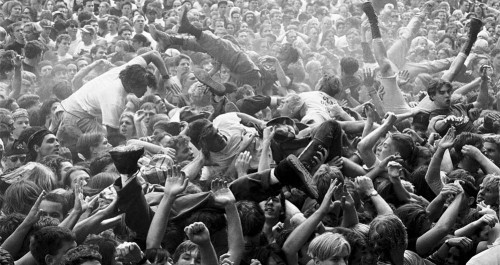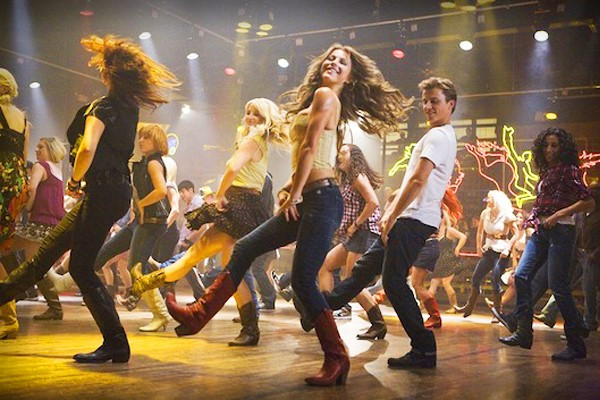The 1920s, often called the Roaring Twenties, were a vibrant era for dance, and the Charleston undoubtedly reigned supreme as a dance craze. At ten-dance.com, we want to help you rediscover the electrifying rhythms of the jazz age, find classes near you, and explore how dance can boost your well-being through engaging content. From the Lindy Hop to the Black Bottom, these dances still bring energy to both modern and historical settings.
1. What Made the 1920s a Unique Era for Dance?
The 1920s were a period of significant social and cultural change, which fueled the popularity of new dance forms. The end of World War I brought a sense of optimism and a desire for freedom, especially among the younger generation. Jazz music emerged as a powerful force, providing the perfect soundtrack for this new era of expression. This combination of social change and musical innovation created an environment where dance could flourish and become a central part of the cultural landscape.
The decade was characterized by:
- Prohibition Era: Despite the ban on alcohol, speakeasies thrived, becoming hotspots for jazz music and dance.
- Women’s Emancipation: The flapper lifestyle, with its shorter hemlines and liberated attitudes, embraced dance as a form of self-expression.
- Economic Boom: Increased prosperity allowed more people to enjoy leisure activities like dancing.
- Jazz Age Influence: The syncopated rhythms of jazz music were perfectly suited for the energetic dances of the era.
2. What Was the Most Popular Dance of the 1920s?
The Charleston was the most iconic and popular dance of the 1920s, embodying the spirit of the Roaring Twenties with its energetic and rebellious movements. Its infectious rhythm and playful steps perfectly matched the upbeat tempo of jazz music, making it a favorite in dance halls and social gatherings across the United States and beyond. At ten-dance.com, you can find easy-to-follow tutorials and connect with instructors who can help you master the Charleston and other dances of the era.
The Charleston’s popularity can be attributed to:
- High Energy: Its fast-paced movements reflected the vibrant and restless spirit of the decade.
- Social Freedom: It allowed dancers to express themselves in a way that was considered unconventional at the time.
- Easy to Learn: While complex variations existed, the basic steps were relatively simple, making it accessible to many.
- Musical Compatibility: It perfectly complemented the syncopated rhythms of jazz music.
2.1. How to Do the Charleston?
The Charleston is characterized by its fast-paced and swinging movements, incorporating kicks, twists, and arm gestures. Although the Charleston can be done solo, it is frequently done with a partner. Here’s a basic breakdown:
- Basic Step: Start by standing with your feet shoulder-width apart. Step back with your right foot, then kick your left foot forward.
- Twisting Motion: Twist your body to the left as you step back with your right foot and kick your left foot.
- Arm Movements: Coordinate your arm movements with your feet. Swing your arms forward and back, opposite to your leg movements.
- Knee Action: Keep your knees slightly bent and springy, adding to the overall bounce and energy of the dance.
![]() Charleston dance move in the 1920s
Charleston dance move in the 1920s
3. What Other Dances Were Popular in the 1920s?
While the Charleston was the most famous, several other dances captured the spirit of the Roaring Twenties, each with its unique style and appeal. These dances were often performed in dance halls, speakeasies, and social gatherings, contributing to the vibrant dance culture of the era.
- The Lindy Hop: A lively and athletic swing dance that originated in Harlem, New York.
- The Foxtrot: A smooth and elegant dance known for its gliding steps and romantic feel.
- The Black Bottom: A high-energy dance with roots in African American culture, characterized by its pelvic thrusts and rhythmic stomping.
- The Shimmy: A solo dance that involved shaking the shoulders and body, often performed by flappers.
3.1. What Made the Lindy Hop Stand Out?
The Lindy Hop, originating in Harlem’s Savoy Ballroom, was known for its improvisational nature and acrobatic moves. Couples would swing each other around, incorporating flips and splits, reflecting the era’s exuberance.
3.2. Why Was the Foxtrot So Popular?
The Foxtrot’s smooth, gliding steps and close embrace made it a favorite for more formal occasions. Its elegance and grace provided a contrast to the high-energy dances like the Charleston and Lindy Hop.
3.3. What Was Unique About the Black Bottom?
The Black Bottom, with its origins in African American communities, was characterized by its rhythmic stomping and pelvic thrusts. Its high-energy movements and suggestive nature made it a controversial but popular dance.
3.4. How Did the Shimmy Reflect the Flapper Culture?
The Shimmy, a solo dance involving shaking the shoulders and body, became synonymous with the flapper lifestyle. Its provocative movements and carefree attitude reflected the newfound freedom and independence of women in the 1920s.
4. How Did Jazz Music Influence the Dances of the 1920s?
Jazz music was the driving force behind the dance craze of the 1920s, providing the rhythm and energy that fueled the Charleston, Lindy Hop, and other popular dances. The syncopated beats and improvisational nature of jazz perfectly complemented the energetic and expressive movements of these dances, creating a symbiotic relationship between music and dance.
- Syncopation: The off-beat rhythms of jazz created a sense of excitement and anticipation, encouraging dancers to move in new and unexpected ways.
- Improvisation: Jazz musicians often improvised their solos, inspiring dancers to do the same with their steps and movements.
- Energy: The upbeat tempo and energetic melodies of jazz provided the perfect soundtrack for the high-energy dances of the era.
- Cultural Expression: Jazz music and dance became a powerful form of cultural expression, particularly for African Americans who played a central role in their development.
 Jazz music influence in the 1920s
Jazz music influence in the 1920s
5. What Was the Social Impact of Dance in the 1920s?
Dance in the 1920s was more than just a form of entertainment; it was a social phenomenon that reflected and influenced the changing values and attitudes of the era. It became a symbol of freedom, rebellion, and self-expression, particularly for women who were challenging traditional gender roles.
- Breaking Social Barriers: Dance halls and speakeasies became spaces where people from different social backgrounds could come together and interact.
- Promoting Racial Integration: While segregation still existed, jazz music and dance provided opportunities for black and white dancers to collaborate and learn from each other.
- Empowering Women: The flapper lifestyle, with its embrace of dance and unconventional attitudes, empowered women to express themselves and challenge traditional gender roles.
- Creating a Sense of Community: Dance brought people together, creating a sense of community and shared identity in a rapidly changing world.
6. How Did the Charleston Become a Global Phenomenon?
The Charleston quickly spread beyond the United States, becoming a global dance craze that captivated audiences around the world. Its infectious rhythm and playful steps were easily adaptable to different cultures and contexts, making it a popular dance in Europe, South America, and Asia.
- Hollywood Influence: Movies and musicals featuring the Charleston helped to popularize the dance and spread its appeal to a wider audience.
- International Tours: American dancers and musicians toured the world, introducing the Charleston to new audiences and inspiring local dancers to learn the steps.
- Cultural Exchange: The Charleston became a symbol of American culture, representing the energy, innovation, and freedom of the Roaring Twenties.
- Adaptability: The dance was easily adaptable to different musical styles and cultural contexts, allowing it to be reinterpreted and reimagined in various ways.
7. What Were the Fashion Trends Associated With 1920s Dances?
The fashion of the 1920s was heavily influenced by the dance culture of the era, with clothing designed to allow for freedom of movement and expression. Flapper dresses, with their shorter hemlines, loose silhouettes, and beaded embellishments, became the iconic look of the decade.
- Flapper Dresses: These dresses were designed to be comfortable and easy to dance in, with hemlines that ended just below the knee.
- Headbands: Beaded headbands were a popular accessory, adding a touch of glamour to the flapper look.
- T-strap Shoes: These shoes provided support and flexibility for dancing, with a strap that crossed the instep of the foot.
- Art Deco Jewelry: Geometric patterns and bold designs were popular in jewelry, reflecting the Art Deco style of the era.
 Fashion trends in the 1920s
Fashion trends in the 1920s
8. How Can You Learn Dances From the 1920s Today?
If you’re interested in learning the dances of the 1920s, there are many resources available to help you get started. From dance classes and workshops to online tutorials and vintage dance events, there are plenty of opportunities to immerse yourself in the dance culture of the Roaring Twenties. At ten-dance.com, we offer a variety of resources to help you explore the dances of the 1920s and connect with a community of fellow dance enthusiasts.
- Dance Classes: Many dance studios offer classes in the Charleston, Lindy Hop, and other dances of the 1920s.
- Online Tutorials: Numerous online tutorials provide step-by-step instructions on how to perform the basic steps of these dances.
- Vintage Dance Events: These events offer the opportunity to dress up in 1920s attire and dance to live jazz music.
- Dance Communities: Connecting with other dancers who share your interest in 1920s dances can provide support, inspiration, and opportunities to practice and perform.
9. What Are the Health Benefits of Dancing?
Dancing is not only a fun and expressive activity but also a great way to improve your physical and mental health. It provides a full-body workout, improves cardiovascular health, strengthens muscles, and enhances coordination and balance.
- Cardiovascular Health: Dancing elevates your heart rate and improves blood circulation, reducing the risk of heart disease and stroke.
- Muscle Strength: Dancing engages various muscle groups, helping to build strength and endurance.
- Coordination and Balance: Dancing requires precise movements and coordination, improving your balance and reducing the risk of falls.
- Mental Well-being: Dancing releases endorphins, which have mood-boosting effects and reduce stress and anxiety.
10. Why Should You Explore Dance at ten-dance.com?
At ten-dance.com, we’re passionate about sharing the joy and benefits of dance with people of all ages and abilities. We offer a comprehensive platform for exploring different dance styles, connecting with dance instructors and communities, and discovering the latest dance events and trends. Whether you’re a beginner or an experienced dancer, ten-dance.com is your go-to resource for all things dance.
- Extensive Resources: We provide a wealth of information on various dance styles, including historical context, step-by-step instructions, and video tutorials.
- Community Connection: Our platform allows you to connect with other dance enthusiasts, share your experiences, and find inspiration.
- Local Listings: We feature listings of dance classes, workshops, and events in your area, making it easy to find opportunities to dance near you.
- Expert Advice: Our team of dance experts provides tips, advice, and insights on how to improve your dance skills and stay motivated.
Ready to explore the electrifying world of dance? Visit ten-dance.com today to discover classes, connect with a vibrant community, and unleash your inner dancer. Whether you’re drawn to the energetic Charleston, the smooth Foxtrot, or the improvisational Lindy Hop, we have everything you need to get started on your dance journey. Join us and experience the joy, freedom, and transformative power of dance! Learn about jazz era rhythms and movement vocabulary.
Frequently Asked Questions (FAQ)
1. What is the Charleston?
The Charleston is a lively dance from the 1920s, known for its kicks, twists, and fast-paced rhythm, embodying the energy of the Jazz Age.
2. Why was the Charleston so popular in the 1920s?
The Charleston became popular because it symbolized the freedom and rebellion of the Roaring Twenties, perfectly matching the upbeat tempo of jazz music and offering a liberating form of self-expression.
3. What are some other popular dances from the 1920s?
Besides the Charleston, other popular dances included the Lindy Hop, Foxtrot, Black Bottom, and Shimmy, each reflecting the unique social and musical trends of the decade.
4. How did jazz music influence the dances of the 1920s?
Jazz music was instrumental in shaping the dances of the 1920s by providing the syncopated rhythms and improvisational spirit that defined the Charleston, Lindy Hop, and other popular styles.
5. What fashion trends were associated with 1920s dances?
Fashion trends included flapper dresses with shorter hemlines, beaded headbands, T-strap shoes, and Art Deco jewelry, all designed to enhance freedom of movement and reflect the era’s glamour.
6. Where can I learn to dance the Charleston today?
You can learn the Charleston through dance classes, online tutorials, vintage dance events, and by connecting with dance communities. Ten-dance.com offers resources to find local classes and online tutorials.
7. What are the health benefits of dancing?
Dancing offers numerous health benefits, including improved cardiovascular health, muscle strength, coordination, balance, and mental well-being by releasing endorphins and reducing stress.
8. How did the Charleston become a global phenomenon?
The Charleston spread globally through Hollywood movies, international tours by American dancers, cultural exchange, and its adaptability to different musical styles and cultural contexts.
9. What made the Lindy Hop different from other dances of the 1920s?
The Lindy Hop stood out due to its improvisational nature and acrobatic moves, often performed in Harlem’s Savoy Ballroom, reflecting the era’s exuberance and innovation.
10. Why should I explore dance at ten-dance.com?
Ten-dance.com provides extensive resources, community connections, local listings, and expert advice to help you explore various dance styles, connect with fellow enthusiasts, and discover the joy of dance, whether you’re a beginner or experienced dancer.
Ready to take your first step? Contact us at Address: 60 Lincoln Center Plaza, New York, NY 10023, United States, Phone: +1 (212) 769-7000, or visit our Website: ten-dance.com to start your dance adventure today!

